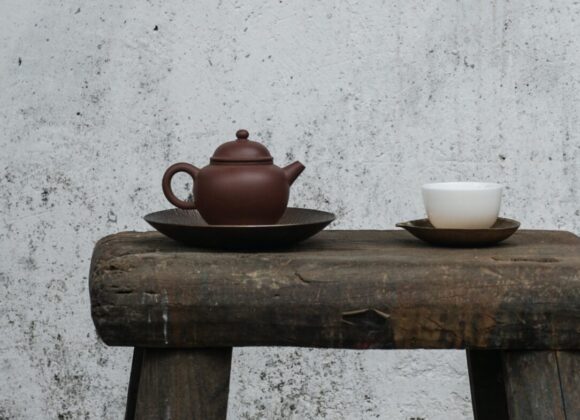The scientific name of Chaga mushroom is Inonotus obliquus. Chaga is not a new discovery early eastern Slavic populations in Europe used it to treat a variety of internal and external issues. They used the fungi for stomachaches, kidney issues, lung problems, inflammation of the joints, and treating tumors. Chaga was also popular as a topical application for skin diseases like psoriasis.
Chaga is not your average mushroom. Unlike many other fungi, it starts growing from the inside of a tree, instead of developing on the surface. As it grows and matures, it protrudes from the tree. You’ll be able to recognize Chaga by its dark, almost black exterior. Looking like something has burnt on the tree. From the inside, it’s a rich orange-brown color with a corky texture.
Among other benefits, Chaga will help you heal psoriasis with its anti-inflammatory properties, enzymes that help to keep the skin moisturized, and by eliminating oxidative stress.
What is psoriasis?
Psoriasis is an autoimmune condition that causes a rapid buildup of skin cells. Which inevitably leads to a buildup of cells causing scaling on the skin’s surface. Very commonly around the area of scales is inflamed and red. Typical psoriatic scales are whitish-silver and develop in thick, red patches. The dryness of the skin will eventually lead to cracking and bleeding.

Psoriasis is caused by a sped-up skin production process. Normal skin cells grow deep in your skin and only slowly rise to the surface, where they eventually fall off. A healthy cycle of that sort takes about a month.
In people with psoriasis, this production process may occur in only a few days. Because of this, skin cells don’t have time to fall off, which leads to an uncomfortable buildup.
Psoriasis isn’t contagious. The cause of psoriasis is still not fully confirmed. Decades of research has lead to two key factors: genetics and the immune system.
Psoriasis is an autoimmune condition, meaning the body is attacking itself. In this case, white blood cells known as T cells mistakenly attack the skin cells.
Chaga for psoriasis
In one Russian study, psoriasis patients who consumed Chaga recovered from their condition. Given that psoriasis is notoriously difficult to treat and responds to very few therapies, this effect alone could be of enormous benefit to many.
The compound ergosterol in Chaga, along with related agents, has been proven for anti-inflammatory activity. It calms the skin and will help to reduce areas of skin inflammation. Improving both pain and function, by healing the skin and supporting the health of your immune system, to reduce future outbreaks. Inflammation is a part of every chronic, degenerative disease, which makes Chaga great support for your health. Reducing systemic inflammation can mitigate and prevent a variety of health problems, leading to a healthier, longer life.
Chaga helps to heal your skin
The fungi will improve your skin’s elasticity, by aiding collagen production. Supporting your skin restoration back to health will inevitably improve the natural look of your skin! Chaga is packed with enzymes that work wonders for keeping skin moisturized and healthy. Due to its parasitic properties, Chaga does a great job of eliminating oxidative stress.
Creams mixed with Chaga tincture and other ointments applied directly to the skin can be helpful for reducing mild to moderate psoriasis.
Additional topical psoriasis treatments include the following:
- anthralin
- moisturizer
- topical corticosteroids
- topical retinoids
- vitamin D analogues
- salicylic acid
Related: 5 Benefits of Chaga for skin health
How to consume chaga?
Raw Chaga technically does no harm but Chaga tea should be brewed with dried Chaga chunks or powder. Moisture causes Chaga to lose its nutritional value once harvested from a tree. Being easily exposed to mould, you’ll need the fungus to be dried for a longer shelf-life, in order to risk any health hazards accruing from improper storage.
Chaga loses some of its nutrients when boiled but heating, on the other hand, expands the cell walls of the Inonotus obliquus. Which allows for more nutrients to become bioavailable and produce a stronger healing potion. So the key to a good Chaga tea is letting it simmer and steep over a longer period of time. If you’re curious about this topic or would like to see our favorite Chaga tea brewing method, check out our related article: Does boiling Chaga ruin it?.
A Chaga tincture, otherwise known as an extract, is the most concentrated way to consume the mushroom.
Chaga mushroom infusions
1. Hot water extraction│Chaga tea
Hot water extraction is the most common, easiest, and cheapest method to prepare Chaga. Just like the traditional tea-making process, Chaga chunks or powder are steeped in hot water for a period of time, strained, and then drunk as tea.
When using this method, all the water-soluble components, such as the polyphenols and beta-glucans, will be present in the resulting extract. However, water-insoluble components, such as phytosterols, and betulinic acid will be missing. If somebody’s debating you on the taste of Chaga, keep in mind that a long brew tea from the nuggets tends to taste sweeter.
Related: Does boiling Chaga ruin in?
2. Double Extraction│Chaga Tincture
Like with all tinctures, alcohol is used as the soaking agent for Chaga infusion. The mushroom is combined with alcohol and soaked for a set period of time, quite often months. Once it’s ready, the Chaga is removed, leaving a concentrated extract.
Generally, there is no heating or cooking involved. However, with fungi like Chaga, heating releases more nutrients and benefits. Recipes that include heating the Chaga are considered stronger, more potent options.










